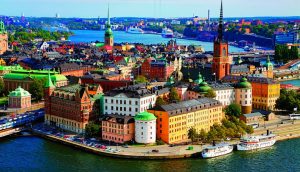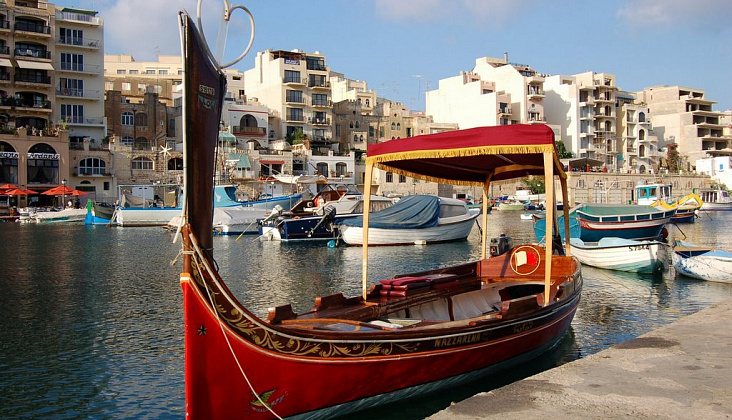Denmark is a state in Northern Europe
 SHOPPING
SHOPPING
From Denmark you can bring porcelain and glass, handmade silver.
Shops are open from 9.00 to 18.00 on weekdays and from 10.00 to 15.00 on Saturday. In Copenhagen on Saturdays, many shops are open until 17.00. Specialized tourist shops, as well as shops located in resort areas, are usually open on Sunday.
The value added tax (MOMS, 25%) is included in the cost of all services and goods, so prices are quite high. Tourists from non-EU countries can return almost all VAT paid (about 20% of the cost of goods) when leaving the country. To do this, you must make a purchase in the amount of not less than 300 DKK, present a passport and fill out a special form, which is then presented when leaving the country. The goods must be sealed and have no signs of use, as well as have a receipt and cash voucher.
WHERE TO STAY
In Denmark – the European classification of hotels (from one to five “stars”). Hotels are generally clean and tidy. The smaller the star – the smaller the size of the rooms and bathrooms.
SEA AND BEACHES
The beaches of Denmark are boundless; in some places their width reaches several hundred meters. The beaches are sandy. From the mainland they are separated by powerful ridges of dunes.
Despite the fact that Denmark is considered a northern state, and, it would seem, does not imply a full-fledged beach holiday due to the short and relatively hot summer, the field of beach tourism is well developed here and is very popular among both the local population and guests. country.
June in Denmark is full of warm and sunny days. However, the water off the coast still does not have time to warm up, and the guests have to be content, mostly with sunbathing. But in July – August, the sea often warms up to +22 degrees, and invigorating swimming in crystal clear water becomes a real pleasure.
STORY
In the IV. the Utes and the Angles arrived on the territory of Denmark, they subsequently moved to Britain, and the Jutland peninsula settled in the Danes. By their name was named the country itself. The tribes of the Scandinavians were headed by kings (kings, leaders).
The Scandinavians are known in history for their sea raids (Vikings). Being excellent sailors, they reached the shores of England, France, Greenland, and then America. Especially the Danes succeeded in the raids, and if the Norwegians went to Greenland, America, settled Iceland, then the Danes preferred France and England.
In the years 1397-1523. Margarita Danish united under the power of Denmark Norway, Sweden, Iceland (Kalmar union).
In the XV-XVI centuries. power belongs to Rigsrod (Royal Council). Elective king. The clergy has great privileges.
In 1600, the monarchy declared hereditary, it becomes absolute. The aristocracy is losing its former power, and citizens are beginning to take on the service.
In 1523, the union was canceled with Sweden. With Norway, the union continued until 1814, and with Iceland until 1944. In addition, Denmark owned the Duchy of Schleswig-Holstein for some time.
By the end of the XVIII century. capitalist relations are beginning to penetrate into the economy. In the 50s. XIX century. the remnants of feudalism were eliminated, which led to the beginning of the rationalization of agriculture.
In the beginning. XX century. Denmark remained an agrarian country. For a long time there was a union of three states – Denmark, Norway and Sweden, in which Denmark had a dominant role.
In the modern borders Denmark exists since 1944, after the dissolution of the union with Iceland. In 1949, it was proclaimed a constitutional monarchy.
During the Second World War, it was occupied by fascist Germany, which significantly worsened the economic situation in the country.
Denmark is a member of NATO, military facilities of this organization are located on its territory. At the same time, the government is pursuing a policy of renouncing nuclear weapons and not deploying foreign troops on the territory of the country in peacetime. Since 1973, the state is a member of the EU.
RECOMMENDATIONS AND ADVICE
As in all EU countries, Denmark has a whole system for limiting smoking.
The best time to visit the country is from July to August, when the air temperature is + 16-18 C, and there is relatively little rain.
Denmark cannot be called a very affordable country for recreation in it – the prices here, both for food and various services, are quite high. However, if you refuse to stay in good hotels, staying somewhere at the camp site or camping and solving minor household issues on your own, you can significantly reduce costs and, at the same time, spend your leisure time well.
HOW TO GET TO DENMARK
Regular direct flights Moscow – Copenhagen are operated by SAS and Aeroflot airlines.



